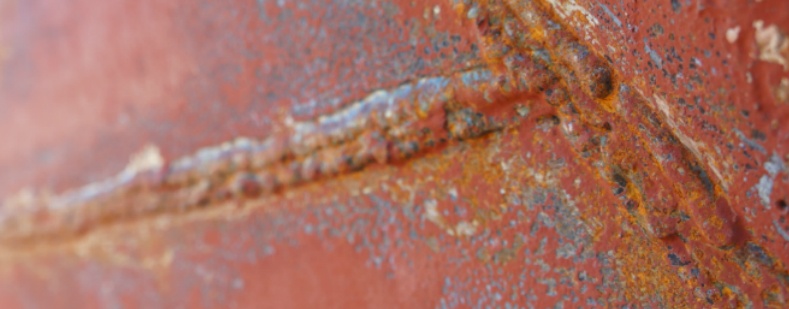Abrasive Blast Media comes in many different shapes and sizes. The size, shape and also the force with which blasting abrasives are propelled to the surface often determine the profile created during blasting. With few exceptions, most industrial coating projects require a specific anchor profile of the surface or substrate so the new coating can adhere properly. When choosing an abrasive media, remember that both too big of an anchor profile or too small of an anchor profile will cause premature coating failures.
Consider a shipyard making improvements and repairs to a cargo ship that has spent several years at sea. Due to the saltwater environment and normal wear and tear, the ship will start to exhibit signs of corrosion damage. When the ship docks for repairs, a coatings engineer/specifier will assess the level of corrosion and in some cases recommend the complete removal of the hull’s protective coating and recommend an appropriate coating system. Within the selected coating’s data sheets are profile and surface cleanliness specifications. Abrasive blasting media is chosen based on a number of factors, but the coating’s specified profile and surface cleanliness level are most important.
Abrasive Blasting with a consistently sized abrasive is essential to creating the desired profile. Typically non Sponge-Jet Abrasives like coal slag and glass are generally sized and graded. Bags of this media are filled with a range of abrasive particles, creating larger peaks and valleys in a profile than what we recommend. A less uniform surface profile can cause an increase in the cost of a coatings system and take longer to apply.
Like many other mined abrasives, sand is passed through sieves/screens to classify specific grain sizes, which allows for the creation of different surface profiles when blasted. Ordinary sandblasting equipment is still considered inexpensive and ordinary abrasives like sand abrasives are commonly purchased by the ton.
Some coatings contractors and abrasive blasters continue to use sand abrasives despite knowing the risks of sandblasting. While sand abrasives are a productive method of surface preparation for coatings requiring both an anchor pattern and a high degree of surface cleanliness, its use is banned in many countries due to concerns from silicosis. Starting in 1947 the United Kingdom banned the use of abrasive sand; Germany, Sweden, Belgium and other countries soon followed. Numerous regulatory entities in the US, and also the US Air Force, Coast Guard and Navy, have banned use of silica in abrasive blasting as well. OSHA’s Abrasive Blasting Fact Sheet highlights common health hazards caused by abrasive blasting, with silicosis at the top of the list. The OSHA Fact Sheet can be found here.
Today, contractors and operators continue to move away from sand to using alternative mined and manufactured blasting grit. Abrasives like aluminum oxide, glass, garnet, and steel are used to replace the profiling ability of sand abrasives. However, sand’s replacements are also under the scrutiny of US regulatory agencies. A 2006-2007 Evidence Package organized by NIOSH’s Respiratory Diseases Research Program (RDRP) concluded among other things… “coal, slag and olivine were more toxic [than sand]” , and “garnet, staurolite, nickel slag, copper slag, crushed glass, and treated sand exhibited toxicity in the same range as sand”
The prolonged exposure to abrasive-alternatives will continue to challenge both abrasive manufacturers and users, but there is a dry solution that mechanically suppresses dust at the source of generation. Sponge Abrasive (or Sponge Media™ abrasive) is the only abrasive media that suppresses up to 99% of what would normally become fugitive emissions while limiting ricochet or rebound. Sponge Jet manufactures a wide range of profiling Sponge abrasives and cleaning agents that are deemed “less toxic blasting material” by OSHA.
Sponge-Jet always recommends using a respirator while doing any kind of abrasive blasting, as the target surface could contain unknown harmful contaminants.








